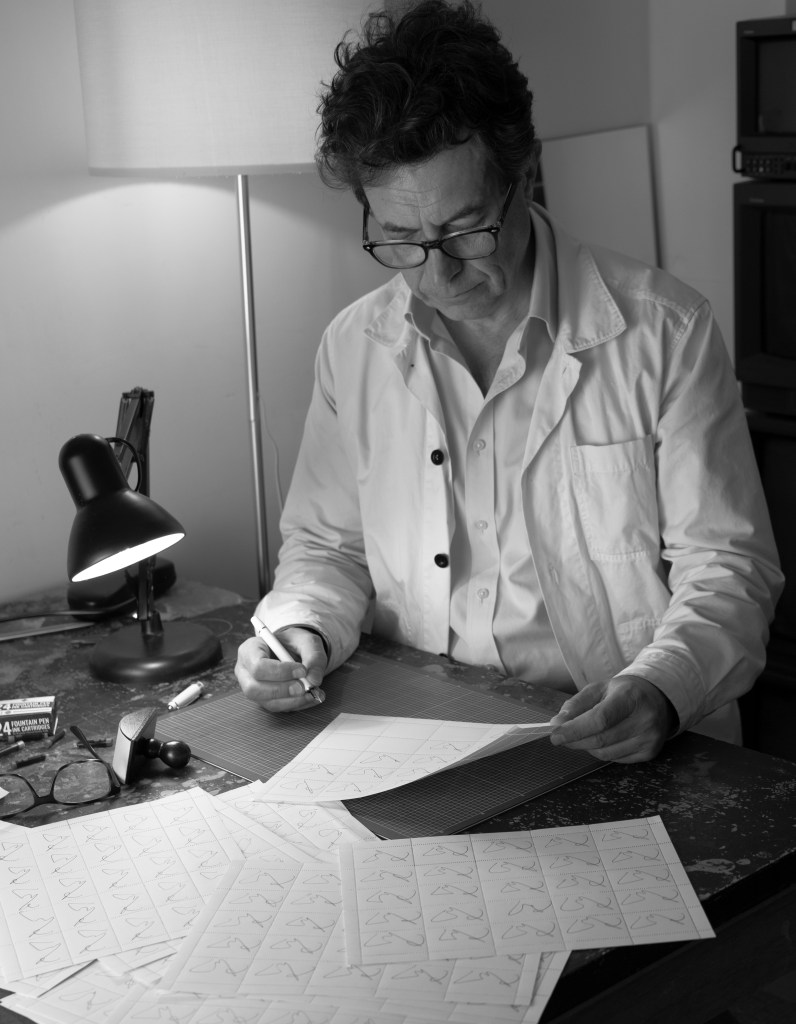
How did your artistic journey start?
From early on I was interested in performance, and in my youth I appeared on TV, radio and the stage. After I graduated, I worked as a TV director for nearly twenty years before moving into academia, where I developed an interest in video art.
How did you arrive at the theme of your work?
Although I work in a number of media, I still mostly make video-based works. Perhaps because of my performance background, the essence of this medium for me lies in the human body, and in the emotional and conceptual power of our actions and expressions. Recent works of mine have taken these actions and explored the aesthetics of the traces and marks they leave behind. This is what made me consider the signature and its meaning in our lives and society. Eventually this process of thought led me to make a physical artefact, Book of Signatures. Although it seems far removed from my work as a video artist, they do share a common conceptual foundation.
Can you walk us through your creative process?
My work always has to satisfy me conceptually and aesthetically. Often a project will start with the aesthetic. I will see something – often a fascinating movement or action – something that is impossible to look away from, but which for whatever reason has never before been captured and considered in a video work. Then it will be a question for me of exploring this deeply, cinematographically, and with editing, in order to find its conceptual essence.
With other works, such this one, however, the starting point was conceptual – and quite rarified – the semiotics and social meaning of the signature. I then needed to explore the aesthetic possibilities of the idea, in order to try and create something that would be compelling to look at, and, in this case, handle. The repetition there is in sheets of stamps produces a kind of visual rhythm that I really liked. And combining them in a book generates a tactility, a phenomenological relationship with the spectator that goes beyond the purely visual.
How has your practice changed over time?
Video was the natural starting point for my practice, given my past background. As this practice has evolved I also made works in sound, with graphics, still-images and light. Even physical objects, like this piece. Despite these variations in my work, I still consider myself a video artist at heart.
How do you overcome creative blocks?
The important thing is to listen to and respect any idea that come to you; however half-formed or incomplete; however silly or foolish it may seem. It is always worth writing something down. When you have a repository of different projects on the go – even just in a notebook, or in your head – you will always have something you can work on. This way, projects getting stuck in the process of development or conceptualisation becomes less frustrating.
Who influences you? Which other artists work do you love?
From the classic era of performance and film/video in the 60s and 70s, I repeatedly return for inspiration to the works of Acconci, Abramović, Ono and Nauman. From more recent times, I have long admired the work of Kwan Sheung Chi and Regina José Galindo. The presentation of Book of Signatures is influenced by the Brazilian artist Lygia Clark. The sculptures she made, and the ready-mades she used, were designed to be shaped, and interacted with, by the spectator – much as Book of Signatures is. It is a powerful notion to me that a work is not complete until the gallery-goer has witnessed it, or helped form it somehow. This is often merely through their presence and observation, but sometimes though a more active role, as in this piece. With Book of Signatures, the work is only fully realised when the gallery-goer takes a signature/stamp (or series of stamps) from the book and affixes it in a suitable place of their choosing – on a document perhaps, or elsewhere.
What advice would you give to artists who are just starting out?
Make work and show it. Never stop making. And always find a way to get the work out there.
Is there anything else you would like people to know about your work or your experiences as an artist?
Please feel free to get in touch info@paul-holmes.org
You can see more of Paul’s work on Instagram @paulhomesstudio
Our Winter Show, Warm Voices, runs at Six Foot Gallery until 9 January 2024.
Leave a Reply